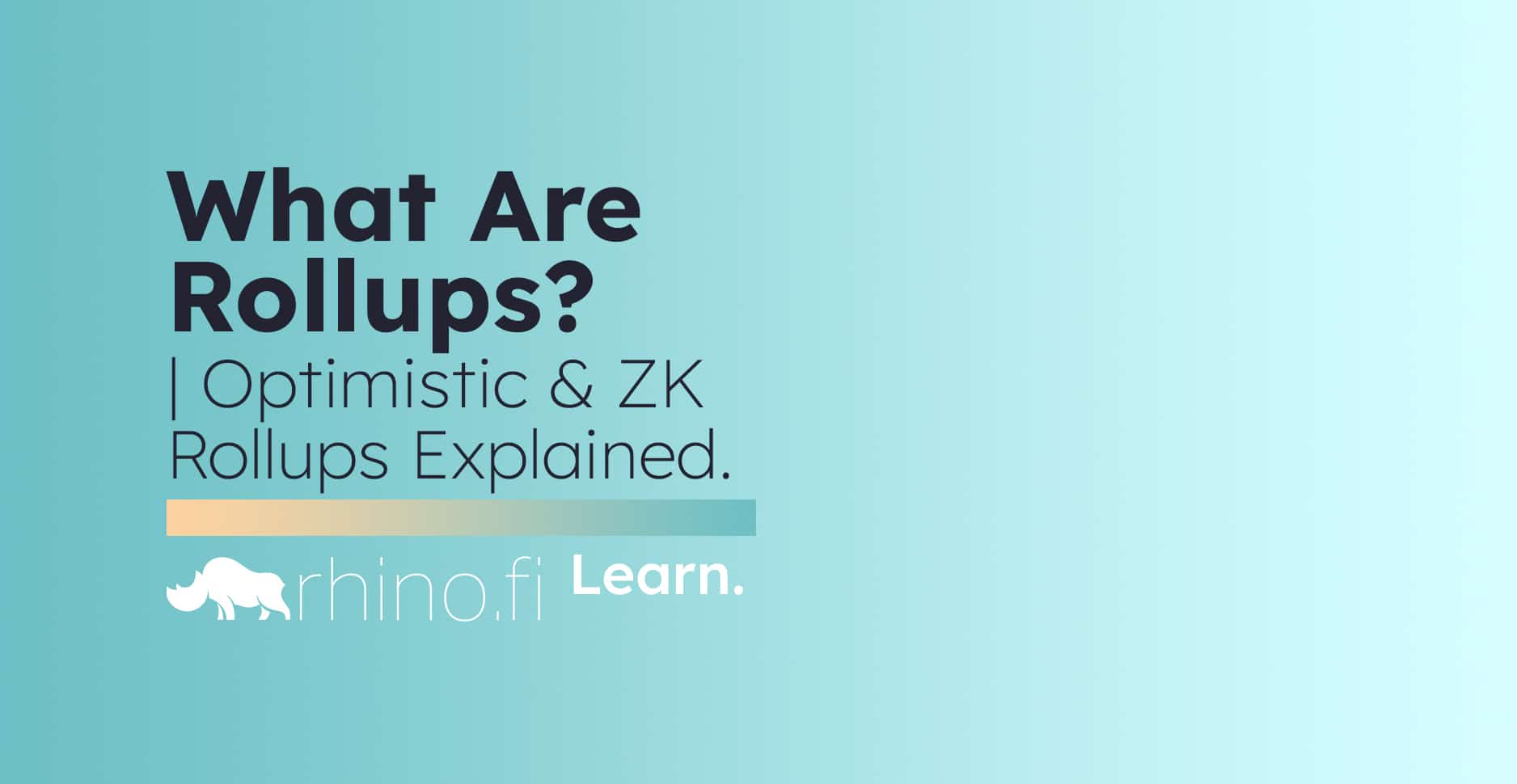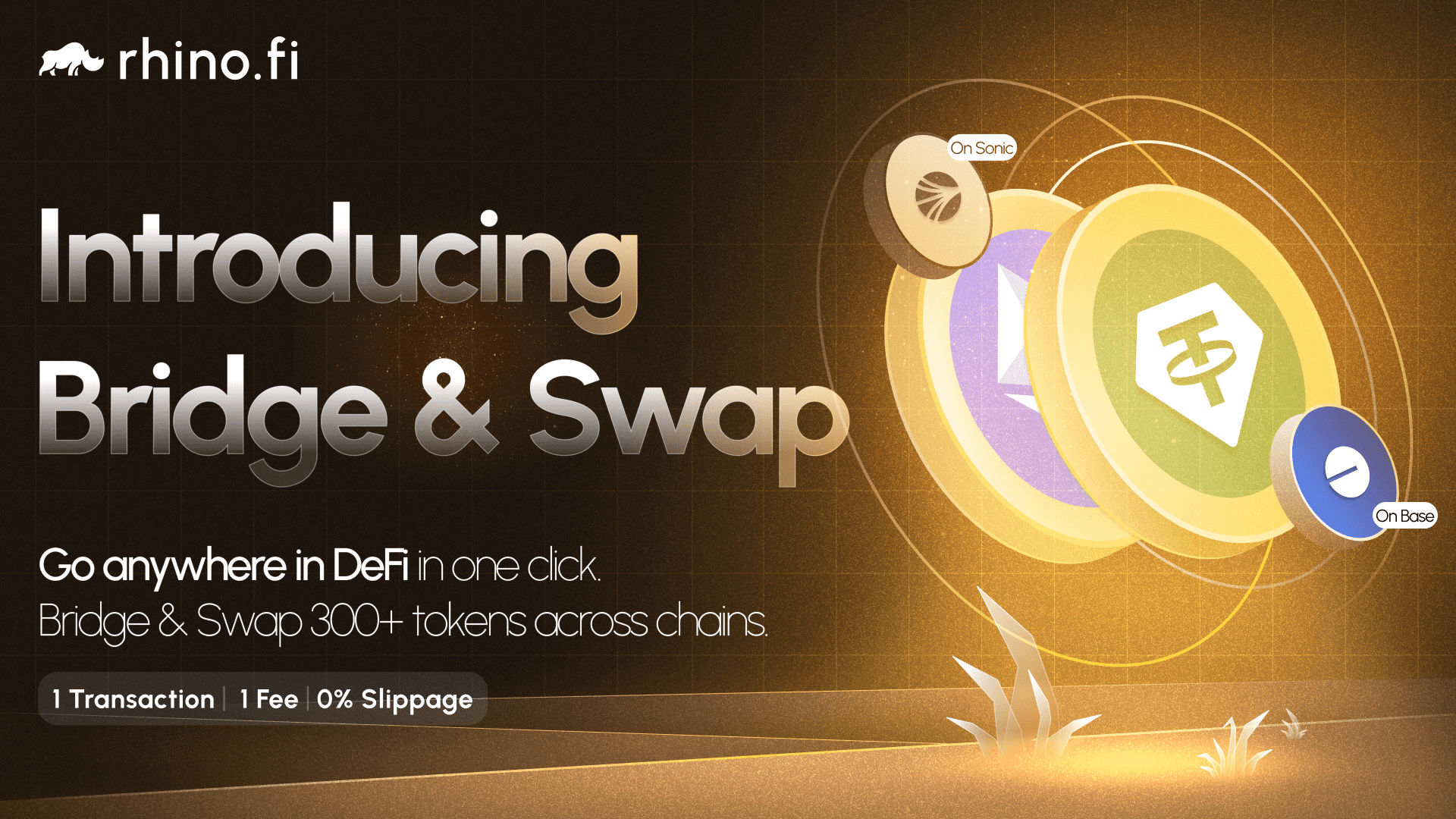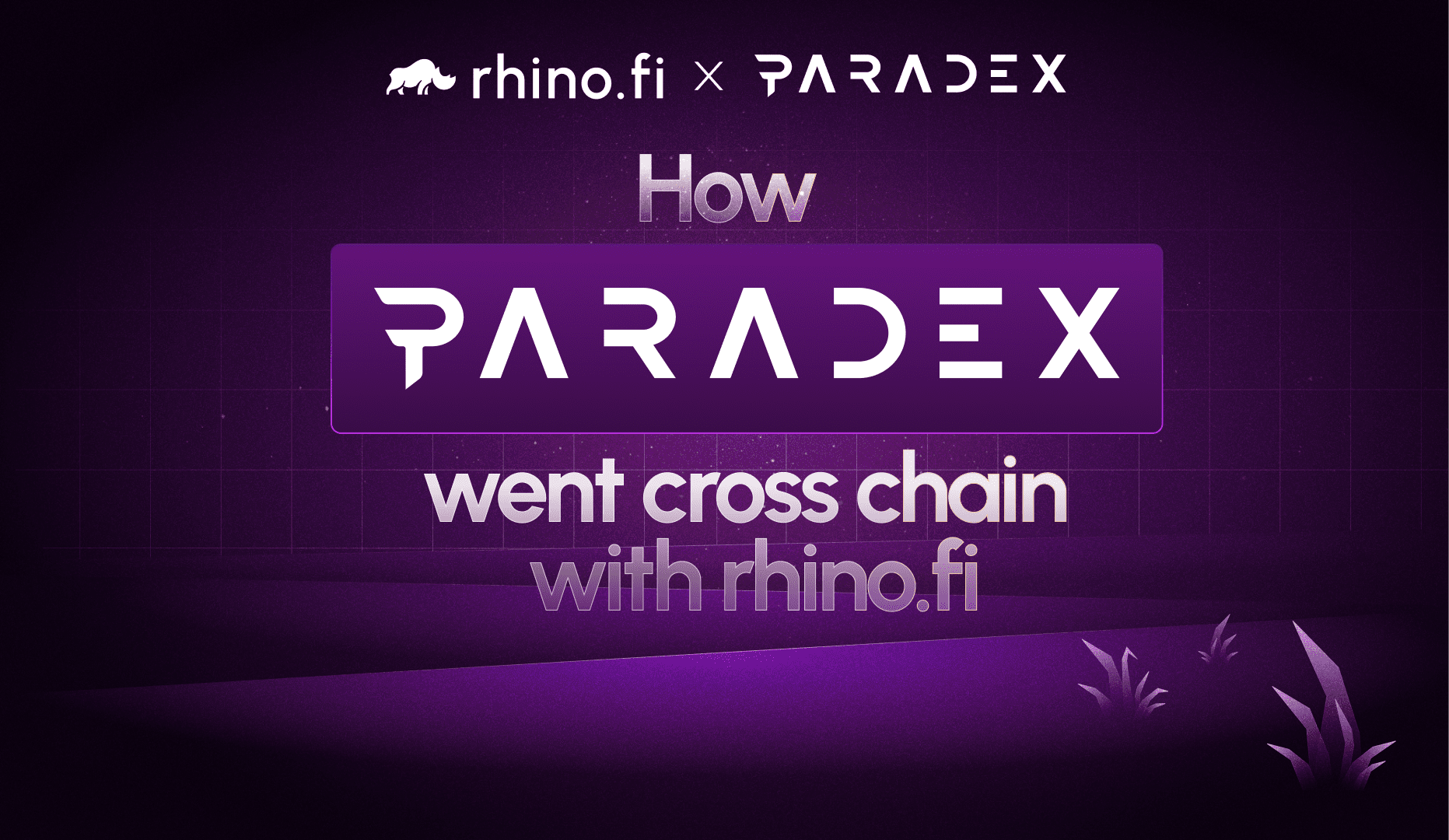A rollup is a platform that is designed to solve Ethereum’s scalability problem.
The platform takes transactions off the main Ethereum blockchain, which is extremely congested, and processes them independently. Because the transactions occur off the main network, users do not face the lengthy delays and soaring gas fees.
Rollups take their name because unlike the main Ethereum blockchain, which processes each transaction individually, they ‘roll up’ transactions and process them simultaneously. This significantly reduces the computing time and brings further convenience to the user.
Rollups come in two primary categories:
- Zero-knowledge, or zk, rollups.
- Optimistic (or as they’re often called, Optimism) rollups.
These two types of rollup strive to provide the same benefits, via slightly different routes. In this article, we’ll explain the key differences.
First off: Why are optimistic and zk rollups important?
The Ethereum blockchain, as we’ve said earlier in the RhinoLearn series, is full to bursting right now.
The network hosts its own native token (Ether) and thousands of decentralised applications. This is creating relentless demand.
Ethereum wasn’t built to handle this much interest. It has limited computing power and its method of validating transactions is relatively slow.
This means that users can face lengthy waiting times when they wish to make trades or other interactions on the Ethereum network (like playing games or investing their assets).
Additionally, the congestion means that gas fees – essentially, the cost of each transaction – can rise significantly, making them unaffordable for smaller traders (if you’re not sure what gas fees are, you can find out more about them by reading our explainer post here).
How rollups solve the problem
Rollups are one of several types of solution built on ‘layer 2’. In other words, they sit on top of the main Ethereum blockchain (layer 1) and are semi-autonomous.
In common with other types of layer 2 solution, such as side chains, Plasma chains and state channels, rollups strive to reduce the traffic on the main network by hiving off some of its transactions (if you want more information about layer 2, check out our explainer).
Rollups fulfil this function through a simple two-step process:
- First, they roll up a bunch of transactions and process them in bulk.
- Then they return to the layer 1 blockchain and post a single record of all the transactions. This saves space on the main network.
Because rollups are built on top of the main Ethereum blockchain, they inherit its robust security features.
However, they are also equipped to validate transactions extremely quickly – as we’re about to explain.
Ok, onto the two main types of rollup: zk rollups vs optimistic rollups
Ok, now we’ve cleared that up, let’s drill down deep. Both Optimistic and ZK rollup projects are designed to verify transactions at lightning speed, but they do so in markedly different ways.
How do Optimistic rollups work?
An Optimistic rollup, as the name might suggest, assumes that all transactions are valid by default. It doesn’t do any calculation as standard; it simply acts as a kind of notary, recording each transaction and posting the data on layer 1.
However, all transactions can be challenged by the community during a designated time period. So if you think one of your transactions, or that of another person, looks a bit off, you can request verification.
Once the rollup receives this verification request, it runs the computation and confirms/rejects the transaction.
How to ZK rollups work?
Unlike Optimistic rollups, ZK rollup projects do the math on every single transaction. But they don’t do all the math.
To determine whether a ‘prover’ (the party that wants to prove the validity of their transaction) is telling the truth, the ‘verifier’ asks them a series of questions. The prover will only have the answers if they’ve done the correct calculations.
It’s important to note here that the verifier doesn’t ask for the information itself. They simply want confirmation that the prover possesses it.
This is an extremely tricky topic to get your head round (trust us, we’ve been there!) so here’s a helpful analogy.
Let’s say you’re in a maze and there’s a reward of 1 million ETH for completion. But there’s a catch: there’s only one way out, and you’ve got to prove you’ve followed the correct route to get your prize.
There are locked doors throughout the chosen route, each of which has a number above it. So, to prove to the maze-master you’ve gone the right way, you have to collect all the numbers and recall them at the end, in the correct sequence.
Ok, that’s a really simple way of explaining it but we hope you get the picture!
So, in summary:
- Rollups are designed to solve Ethereum’s scalability problem.
- They work by taking transactions off the main blockchain, processing them in bulk and passing a single record back to layer 1.
- They are equipped with fast validation techniques to maximise the speed benefits for users, and they aoffer freedom from hefty gas fees.
- The ‘ZK rollups vs Optimism rollups’ question is actually a misnomer: the correct term is Optimistic, not Optimism.
- While Optimistic rollups assume all transactions are valid by default, zk rollups use mathematical challenges to prove the validity of each transaction.
Enjoyed this edition of RhinoLearn and want some more knowledge? We recommend you check out our explainer on the differences between layer 1 and layer 2, or our piece about the differences between Ethereum and bitcoin – this will explain Ethereum’s challenges in more detail.





